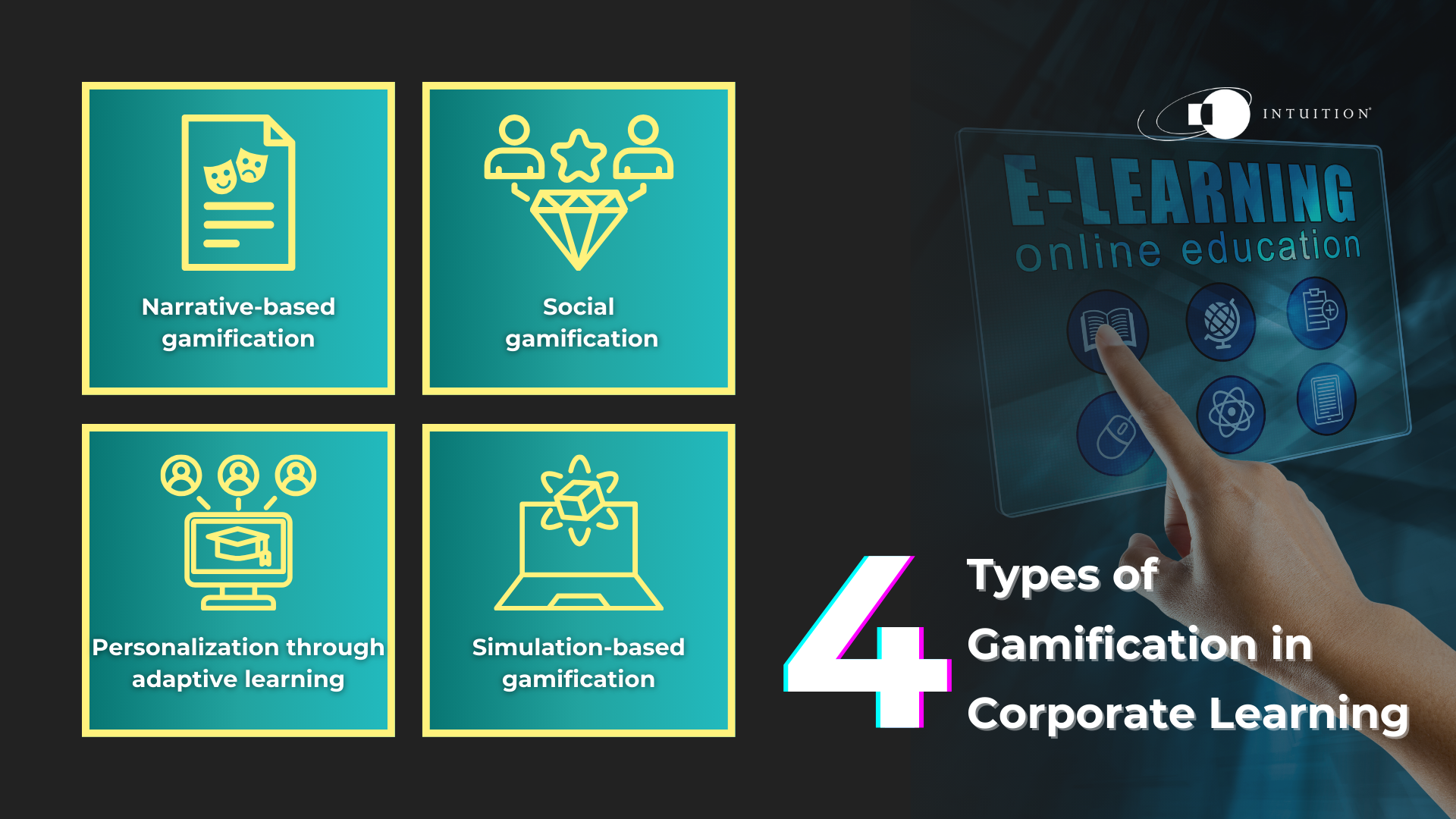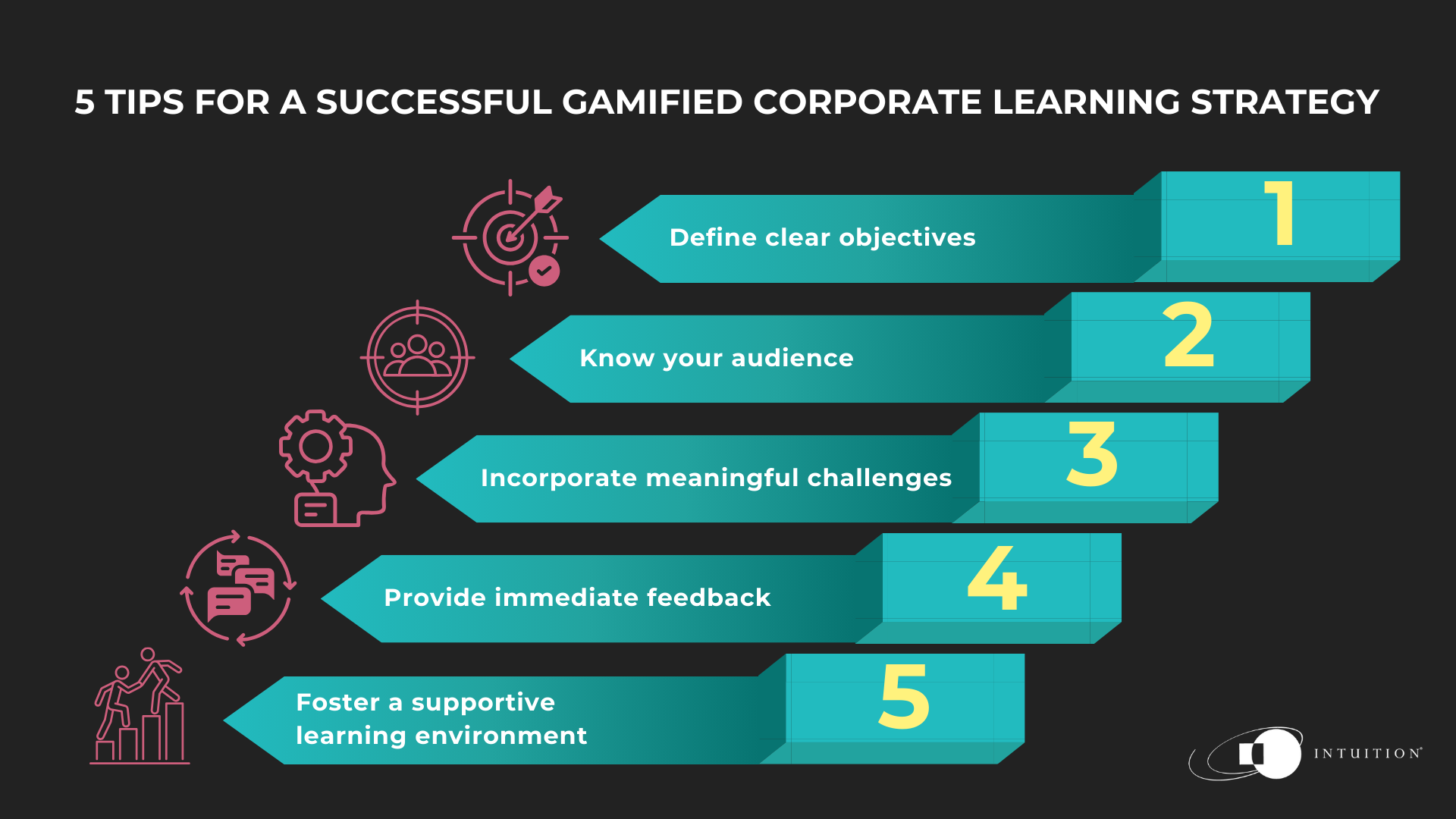Four ways to gamify your company's corporate learning strategy
In today’s fast-evolving corporate landscape, gamification has emerged as a game-changer in Learning & Development (L&D). By weaving gaming mechanics into the fabric of your corporate learning strategy, your business can significantly enhance learner engagement, retention, and overall performance. This strategy transforms learning from a passive to an active, enjoyable experience, leveraging the natural human propensity for play to facilitate deeper learning and connection.
Other articles in this series:
Gamification 101: Gamified corporate learning evolution
Game-Based Learning (GBL) vs gamification in learning
The psychological underpinnings of gamified learning
Types of gamifications for your corporate learning strategy
Narrative-based gamification:
This approach turns learning into a storytelling journey, where learners progress through content framed within an engaging narrative. It not only captivates attention but also contextualizes learning, making complex concepts more digestible and memorable. For instance, learners might embark on a quest to solve industry-related challenges, with each module representing a chapter in their adventure.
Social gamification:
Incorporating social elements, such as leaderboards, team challenges, and social sharing, into learning fosters a sense of community and healthy competition. This strategy leverages social influence and comparison to motivate learners, encouraging them to engage more deeply with the content and strive for excellence alongside their peers.
Personalization through adaptive learning:
Adaptive learning tailors the educational experience to the individual’s needs, leveraging data analytics and AI to adjust the difficulty level and content based on the learner’s performance and preferences. Gamified elements like achievements and feedback loops enhance this personalization, making learning more relevant and engaging for each participant.
Simulation-based gamification:
Simulations offer hands-on, immersive experiences that replicate the kind of real-world scenarios learners are likely to encounter on the job. This method not only boosts engagement but also enhances skill acquisition and practical application, preparing learners for real-life challenges in a risk-free environment.

Case studies: Applying gamification in real-world settings
Drawing from the insights shared in Intuition’s Gamified Corporate Learning white paper, several case studies highlight the transformative potential of gamified corporate learning. For example, a multinational corporation introduced a narrative-based gamification program to train employees in compliance, leading to a marked increase in engagement and understanding of complex regulations. Another case saw a tech company leveraging social gamification to foster a collaborative learning culture, resulting in improved teamwork and communication skills across departments.
Download the white paper to read a detailed version of the case studies.
Tips for a successful corporate learning strategy that leverages gamification
Define clear objectives:
Start with a clear understanding of what you aim to achieve through gamification. For maximum impact, align game mechanics with specific learning outcomes.
Know your audience:
Personalization and relevance are key to engaging different segments of your workforce.
Tailor your gamification strategy to the preferences and profiles of your learners.
Incorporate meaningful challenges:
Ensure that challenges and tasks are directly related to real-world applications and learning objectives. This relevance enhances motivation and the practical value of the learning experience.
Provide immediate feedback:
Use points, badges, and leaderboards to offer instant feedback. This recognition fosters a sense of achievement and encourages continuous improvement.
Foster a supportive learning environment:
Encourage collaboration and peer learning. Social gamification elements can promote a culture of support and shared success.

Conclusion: Unleashing the transformative potential of gamification
Well-implemented gamification has the power to revolutionize corporate learning strategies. By adopting narrative-based, social, personalized, and simulation-based gamification approaches, organizations can create compelling, effective learning experiences that not only engage employees but also drive meaningful development. Understanding and leveraging the psychological underpinnings of gamification can significantly enhance its effectiveness, making learning a rewarding journey rather than a mandatory task.
As companies continue to navigate the challenges of the modern workplace, integrating gamification into corporate learning strategies offers a promising path forward. By doing so, they can cultivate a more skilled, motivated, and engaged workforce, ready to meet the demands of today’s dynamic business environment.
References:
- Gamification narratives for eLearning
- Transformative tales: Unleashing motivation through story-based gamification
- Why gamification narratives matter
- Why and how to build a gamified simulation training program
- Simulation based learning benefits and challenges for eLearning
- Gamifying corporate learning: Board games to simulation


